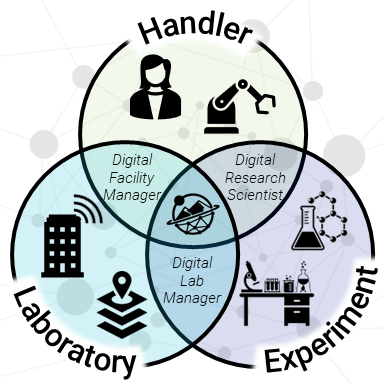Transforming research laboratories with connected digital twins
- Holistic lab automation needs to account for all aspects of experimental research systems.
- Dynamic knowledge graphs enable connected digital twins for research labs.
- Combining knowledge graphs with machine learning enables advanced reasoning.
- This offers a paradigm shift from platform-based to goal-driven self-driving labs.
 To substantially expedite scientific discovery, research laboratories need to be further automated. In this regard, the scientific community envisions an “artificial intelligence scientist” capable of planning, conducting, and assessing experiments based on higher-order goals and reasoning capabilities. We argue that a paradigm shift is necessary to bridge the gap between the current trajectory of lab automation and this vision. Adopting a systems perspective reveals several key challenges that must be addressed. We argue that achieving holistic lab automation requires a network of comprehensive distributed digital twins grounded in a universal knowledge model. Dynamic knowledge graphs are expected to play an important role, and we introduce a framework encompassing all aspects of experimental research, including infrastructure and peripheries. Our framework considers human-machine interactions from the outset to empower a goal-driven approach that brings automation to autonomy.
To substantially expedite scientific discovery, research laboratories need to be further automated. In this regard, the scientific community envisions an “artificial intelligence scientist” capable of planning, conducting, and assessing experiments based on higher-order goals and reasoning capabilities. We argue that a paradigm shift is necessary to bridge the gap between the current trajectory of lab automation and this vision. Adopting a systems perspective reveals several key challenges that must be addressed. We argue that achieving holistic lab automation requires a network of comprehensive distributed digital twins grounded in a universal knowledge model. Dynamic knowledge graphs are expected to play an important role, and we introduce a framework encompassing all aspects of experimental research, including infrastructure and peripheries. Our framework considers human-machine interactions from the outset to empower a goal-driven approach that brings automation to autonomy.
- This paper draws from preprint 314: The Digital Lab Framework as part of The World Avatar
- Access the article at the publisher: DOI: 10.1016/j.ynexs.2024.100004



